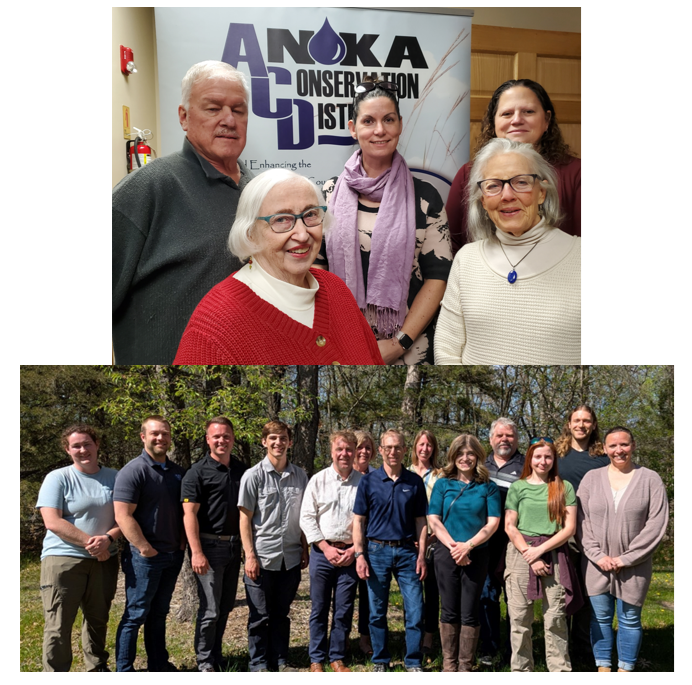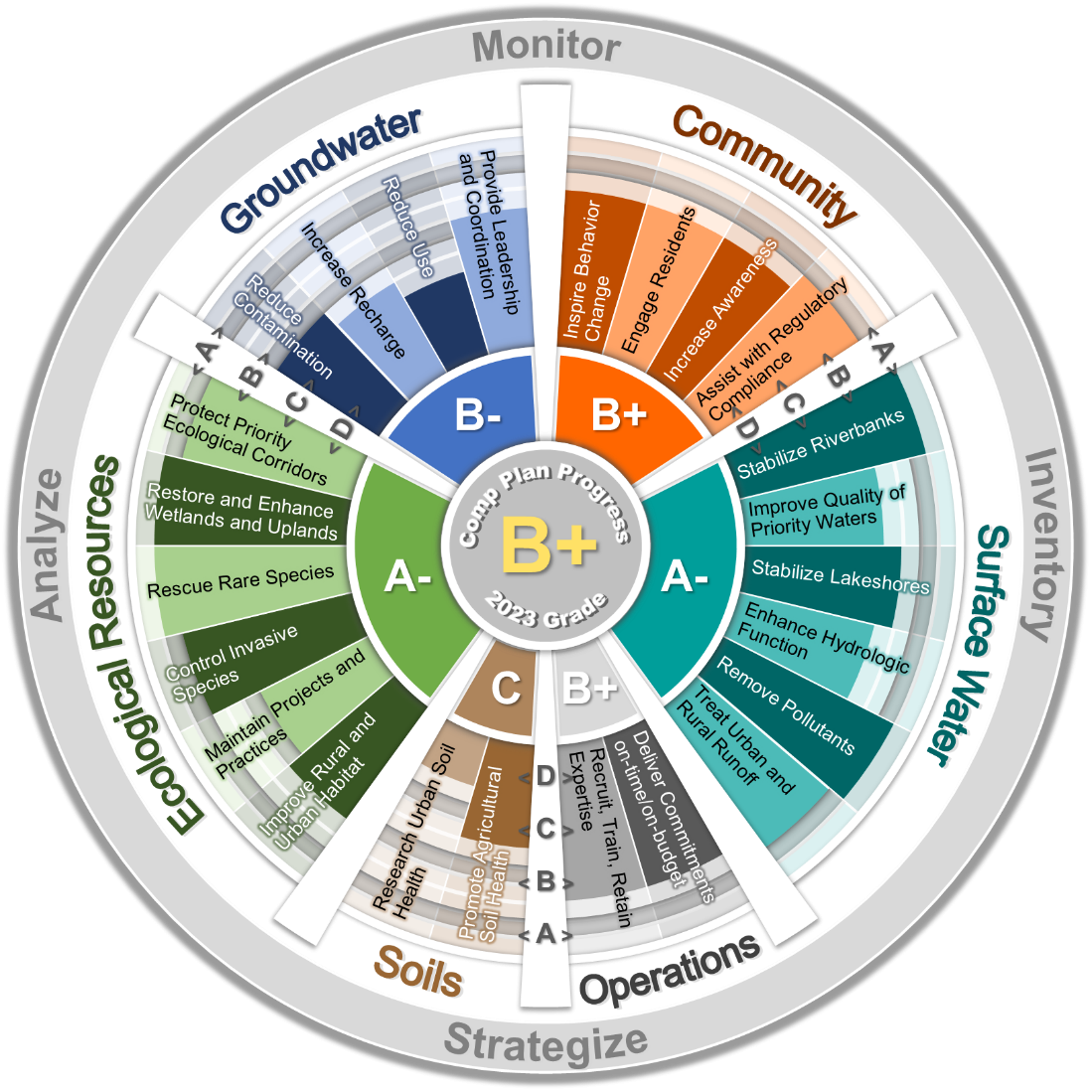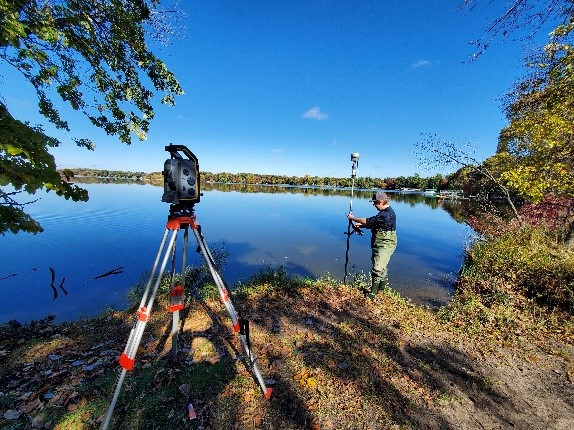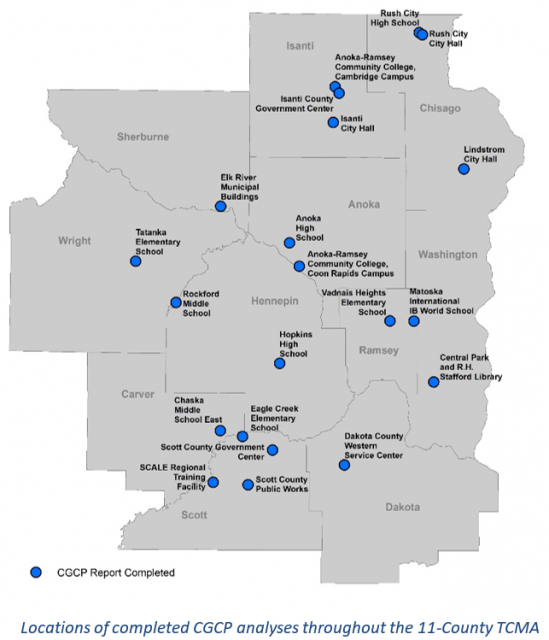Do you want to start a new garden or fill in some gaps? Fall is a great time to plant. The soil is still warm and promotes good root growth and the cooler weather and fall rainfall reduce heat stress on new plants. Select plants based on the area's soil moisture and light exposure. Blue Thumb's Plant Finder is a great tool for selecting native plants and has a list of MN native plant nurseries. Protect pollinators! - Be sure the plants you buy were not grown with systemic pesticides such as neonicotinoids, which are highly toxic to bees and other pollinators.
Choose plants to create habitat for birds and pollinators. Find bird-friendly native plants with Audubon's plant database. Select plants that flower from spring to fall to provide pollen and nectar for pollinators. Learn more about pollinator preferences and include host plants in your garden. Join ACD and help plant pollinator gardens throughout Anoka County. Learn more and sign up here. For more information contact Carrie Taylor, Restoration Ecologist, at
ACD staff recently reflected on 2023 to take stock in how well we've been doing to implement our 10-year Natural Resources Stewardship Plan. We looked at 24 Keystone Endeavors across four priority natural resources, our human resource (community), and internal operations. We also considered foundational knowledge gained through monitoring, inventory, analysis and planning. Grades reflect the following:
A - Ahead of plan
B - On track
C - Progressing slower than anticipated
D - No progress
F - Neglected
10-year Goals
A prerequisite to gauge success is to define our 10-year expectations and aspirations for each keystone endeavor based on our current and anticipated staff and financial capacity. Some goals are easily quantified while others are more subjective.
For more information contact Chris Lord, District Manager, at
Twenty-years ago we designed conservation projects with a tape measure and graph paper. Over the years, ACD has gone high tech. Today we use a survey-grade GPS (shared with neighboring SWCDs) and landscape design software. This allows precise measurements and estimates of quantities. It also allows us to clearly communicate a project's outcomes to landowners and contractors. But we still pull out the tape measure once in a while – it never crashes or fails to connect.
The Metropolitan Conservation Districts (MCD), through funding provided by a Clean Water Fund Accelerated Implementation Grant, created the Campus Groundwater Conservation Planning (CGCP) protocol with the ultimate goal of water conservation project implementation. ACD served as the host district and led protocol development, provided staff training, conducted final report reviews for all 11 Metro counties, and prepared a final report summarizing all completed analyses.
The CGCP protocol provides a detailed analysis of all water using systems on a campus, both indoor and outdoor, and can be implemented by Soil and Water Conservation District (SWCD) staff throughout the state to produce prioritized lists of water conservation project opportunities. The straightforward work products produced by the CGCP protocol empower campus decision makers to confidently implement cost-effective water conservation projects.
Throughout the 11-county Twin Cities Metropolitan Area (TCMA), the CGCP protocol was implemented on 21 campuses with at least one analysis occurring in each county (see map below).Initial outreach efforts to campuses were prioritized based on campus age, with older campuses having a higher likelihood of inefficient fixtures, and selected campuses were required to be publicly owned and use groundwater as a water source.
Cumulatively, the 21 analyses identified significant opportunities for conserving groundwater and saving money. Potential projects from all campuses were compiled, and a total of 2,043 potential projects were identified that would cumulatively save over 113 million gallons over the estimated life of the projects, which averaged 8.4 years. However, not all 2,043 of the projects were financially favorable because the required payback period of some projects exceeds the project's lifespan.
There were 1,182 projects with a positive net financial savings (i.e. the payback periods for the projects are shorter than the estimated lifespan of the projects, so implementation results in a net financial savings) that cumulatively reduce water use by over 101 million gallons over the estimated lifespan of the projects, which averaged 8.6 years. Implementing all 1,182 projects would cost approximately $250,000, but the net savings over the life of the projects is over $485,000.
Nearly 200 of the projects had estimated payback periods of less than one year. Implementation of these projects would save over 15 million gallons of water over the estimated lifespan of the projects and requires an investment of just over $7,500.That initial investment is recouped within the first year, and over the lifespan of the projects, an additional $100,000 would be saved in water and energy costs.
Within Anoka County, Anoka-Ramsey Community College in Coon Rapids and Anoka High School in Anoka were both analyzed. Implementation of the 486 projects identified would cost approximately $100,000 and provide a net savings of over $135,000 over the lifespan of the projects. The total water savings over the life of the projects is estimated to be over 43 million gallons. The detailed reports are available on ACD's website.






